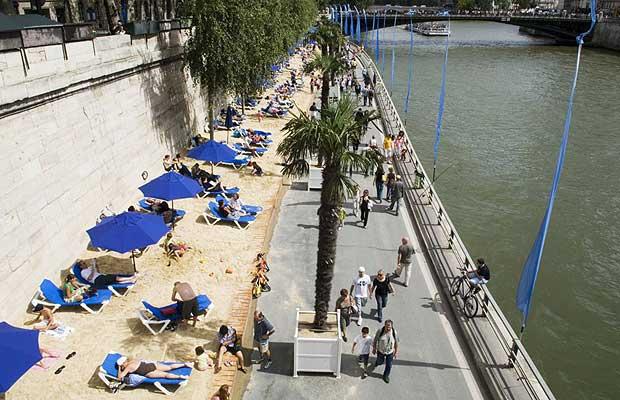During the riots of 1968, as students in Paris ripped up paving stones and threw them at the police, one of the rallying cries was “sous le pave: la plage” (under the pavement: the beach). The beach – the incarnation of a natural, undesignated and non-utilitarian space – was the opposite of the street, a historic relic of a designated, oppressive environment based on private property.
Since May 1968, policymakers have learned to better comply with the needs of the public. At various cities in the worlds every summer a temporarily artificial beach is created on the pavement. Last year alone, in Mexico City the local government created 10 artificial beaches, mostly in poorer parts of the city.
In general, the camouflaging of infrastructure with ‘natural imagery’ has proven a successful strategy to provide the public with a seemingly more friendly and acceptable living environment. This, of course, doesn't withstand that order has to be maintained: Parisian sunbathers that go nude or wear g-strings on the capital's artificial beaches risk a 38 euro fine if they are caught baring their breasts or buttocks. Under the beach – the pavement.
Image: ‘Paris Plage’ (Paris Beach) along banks of the River Seine in Paris.

Share your thoughts and join the technology debate!
Be the first to comment